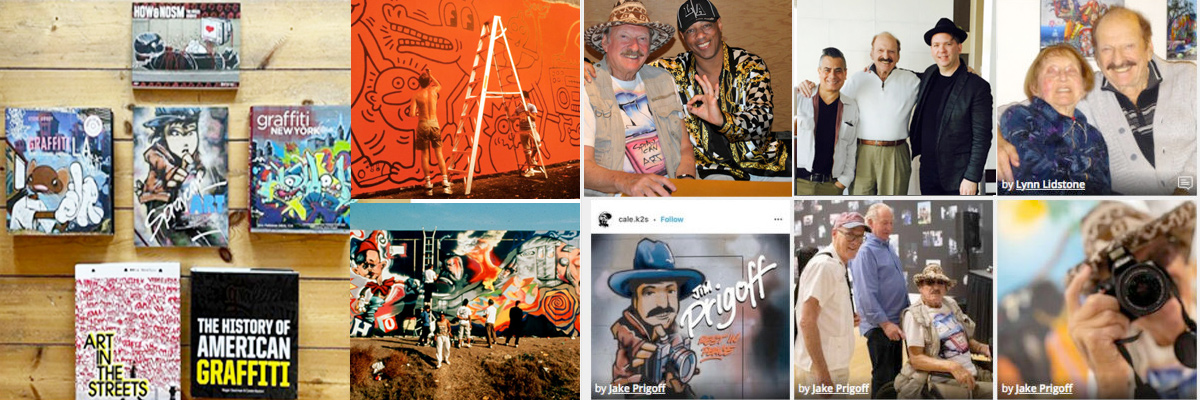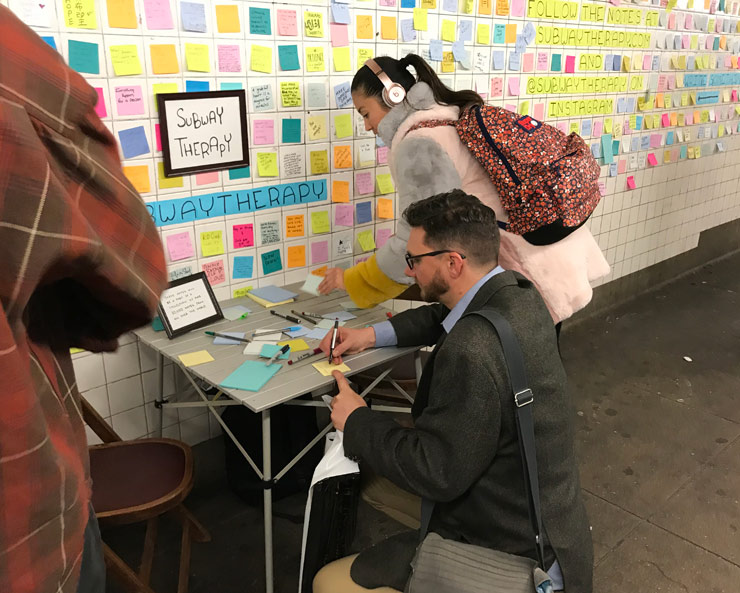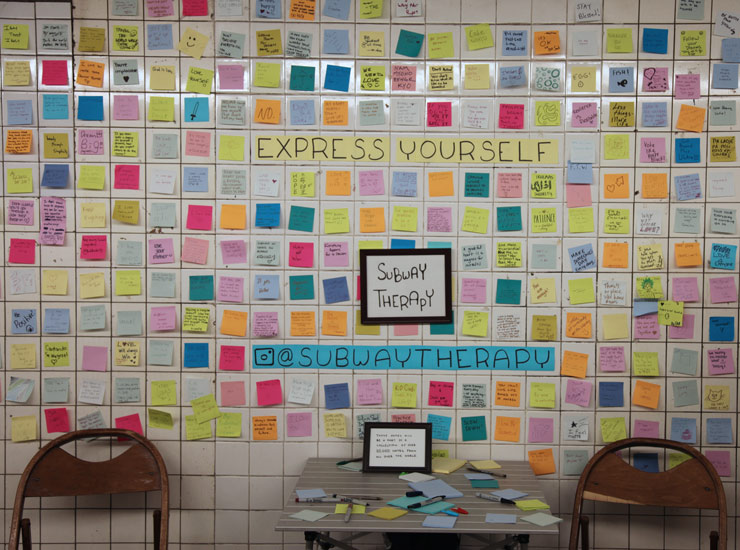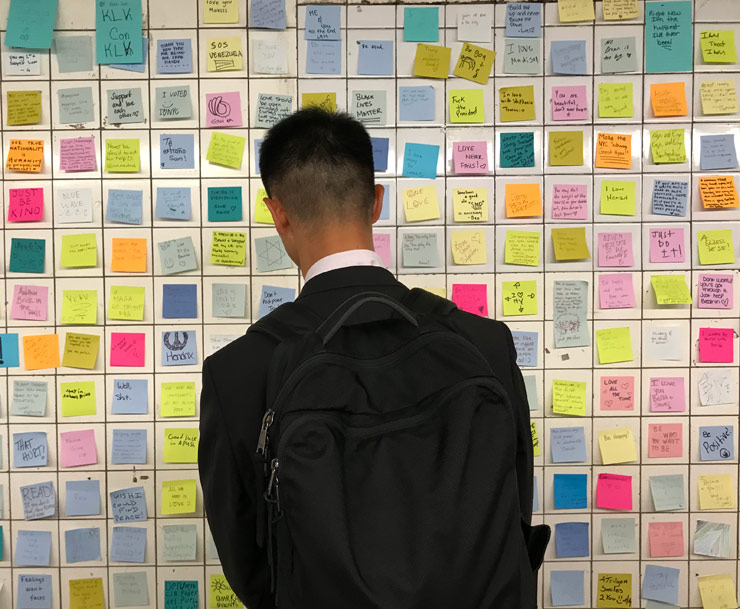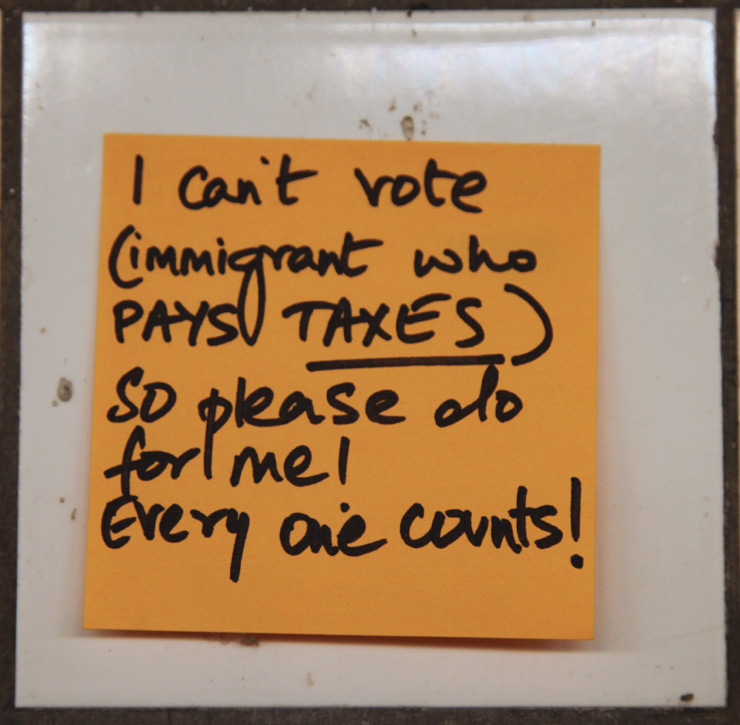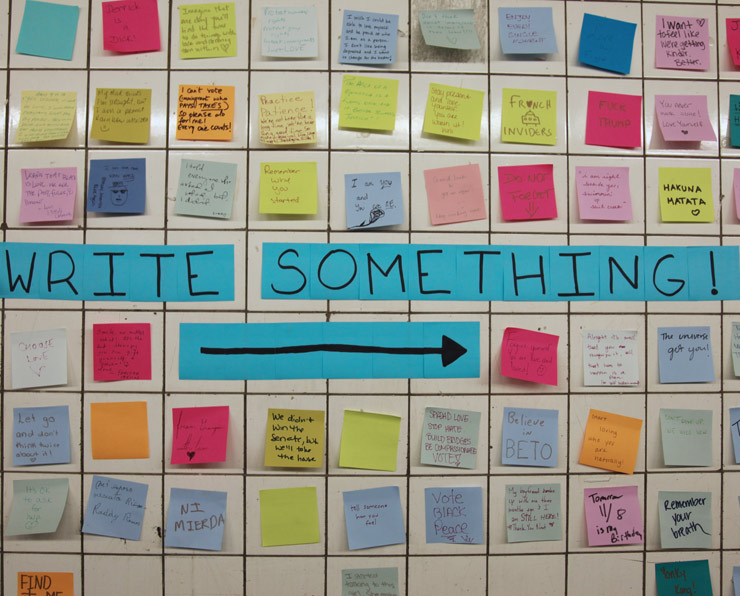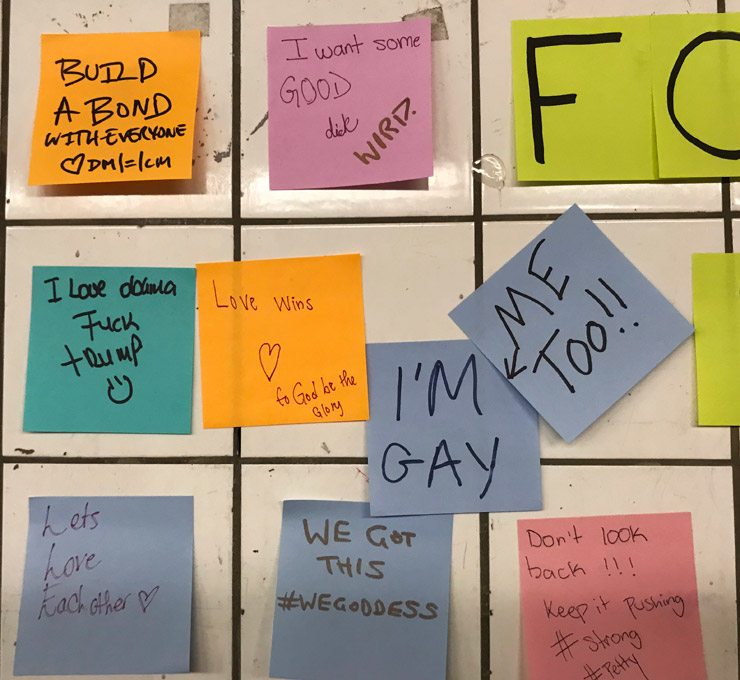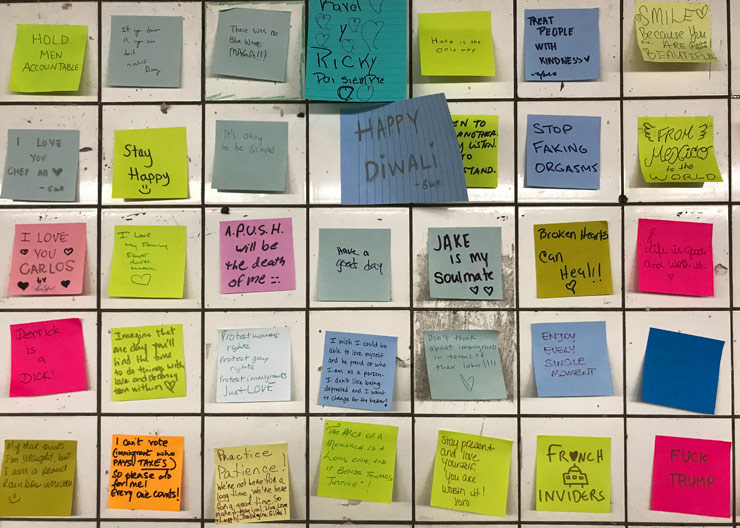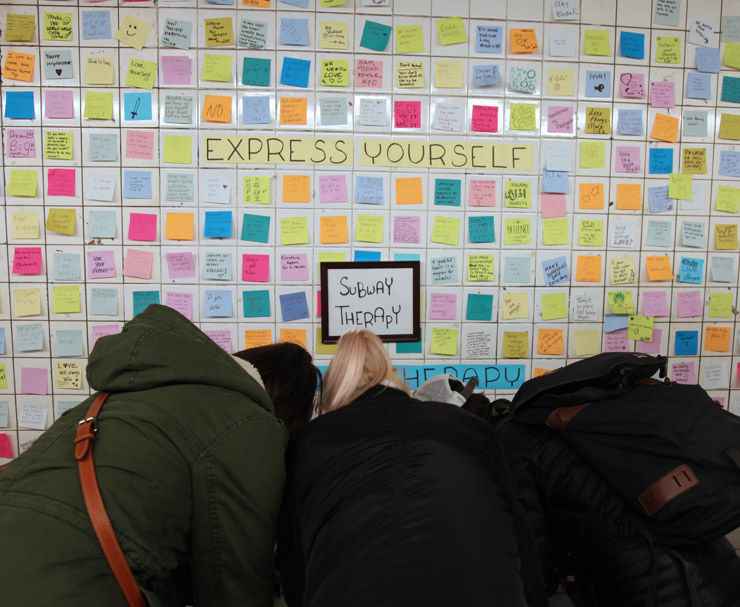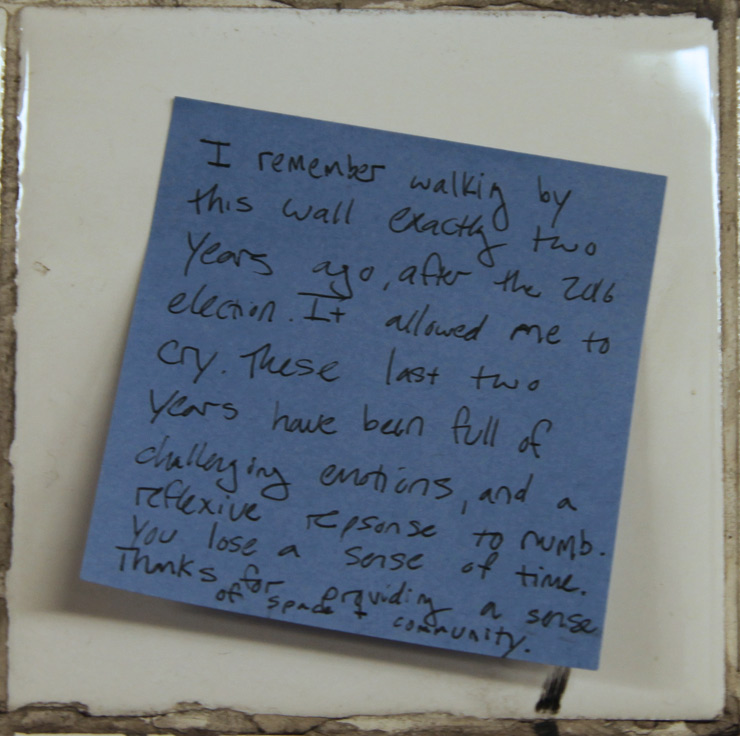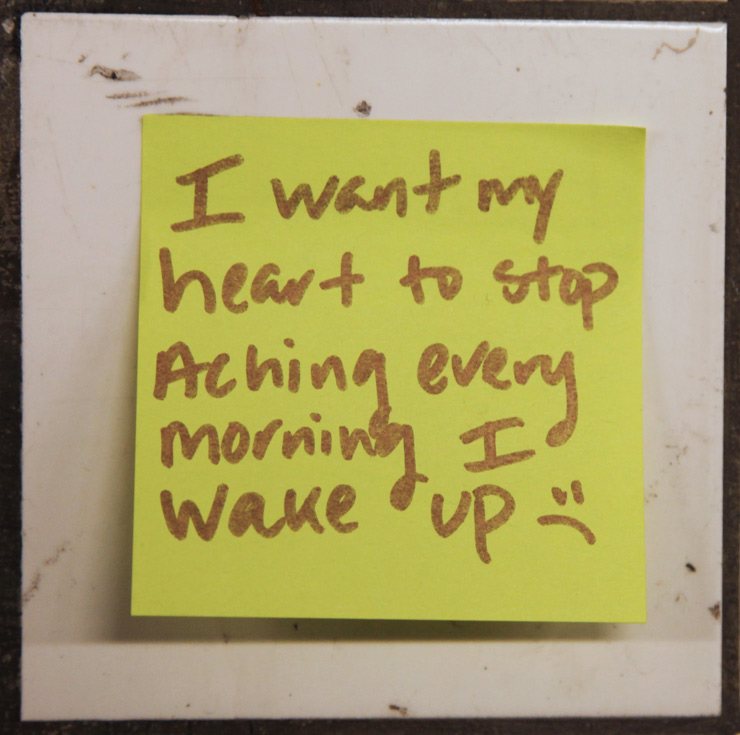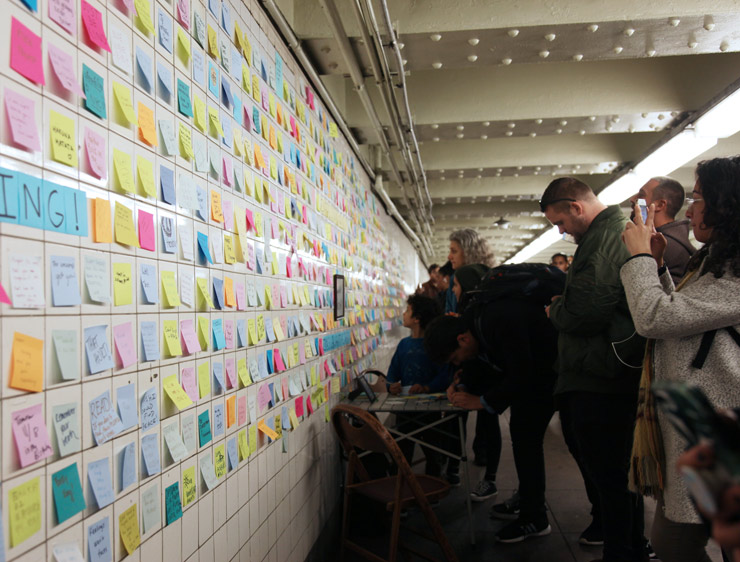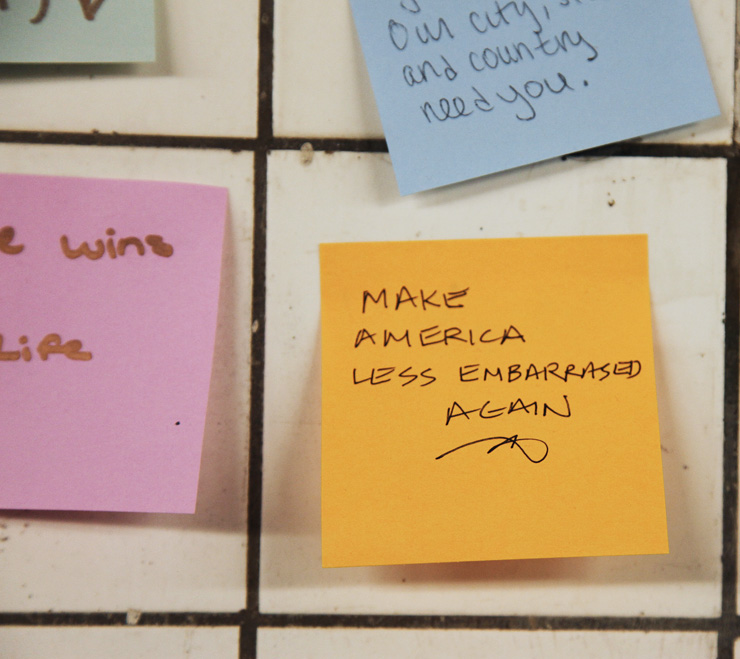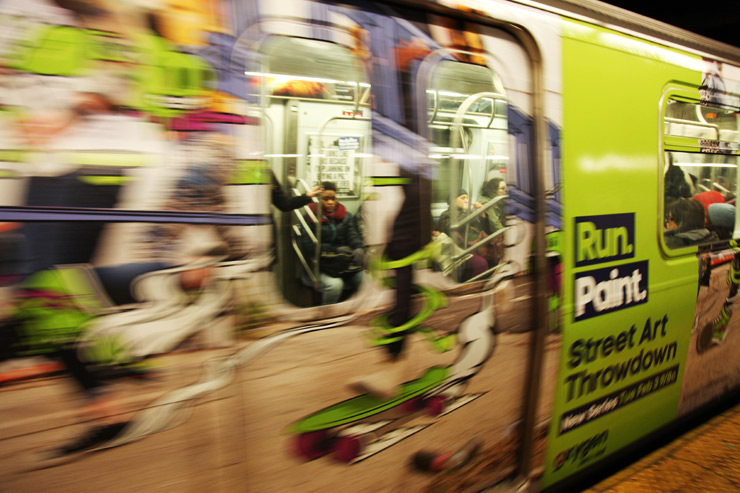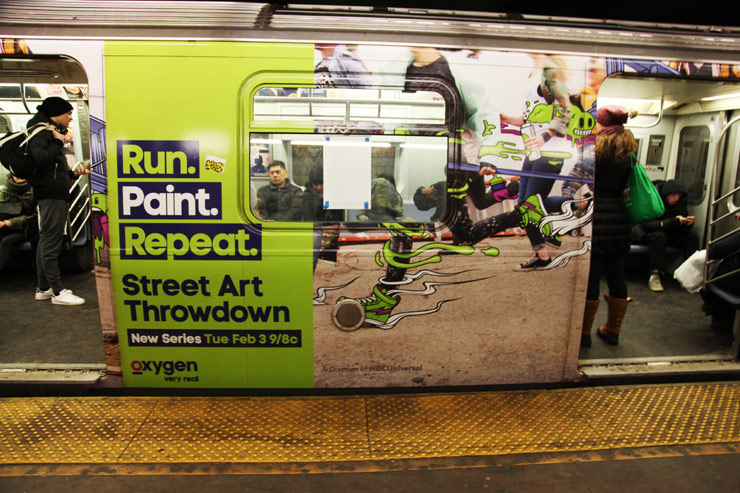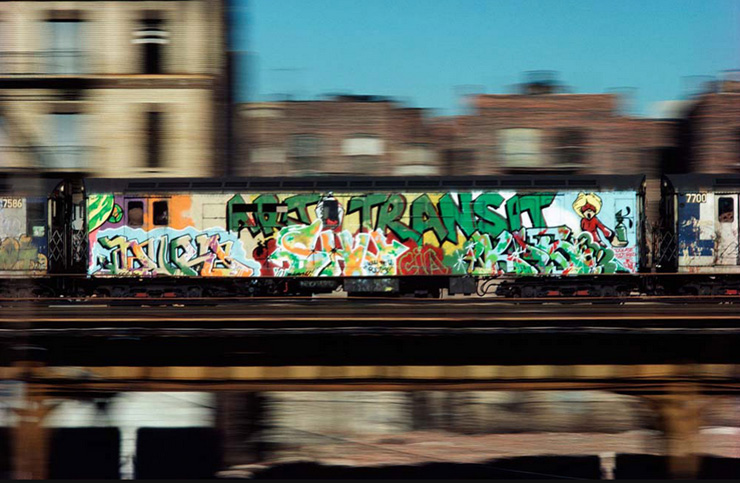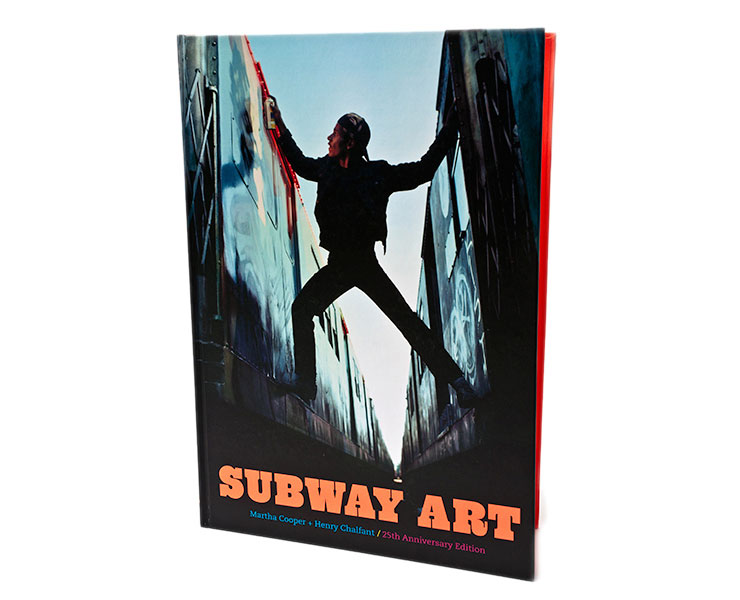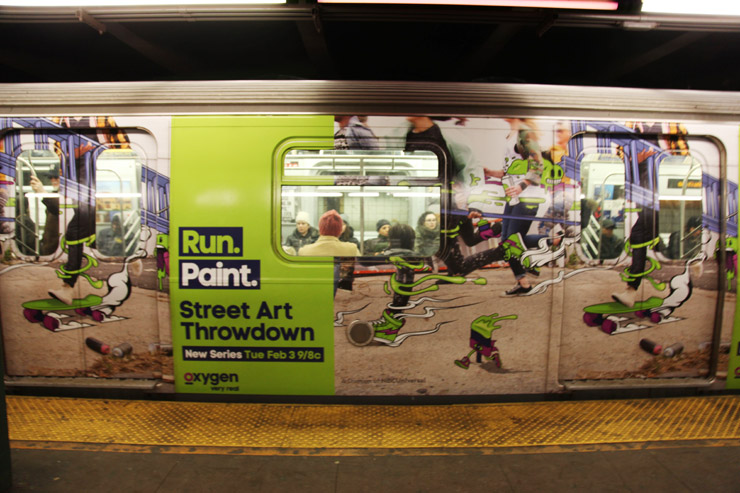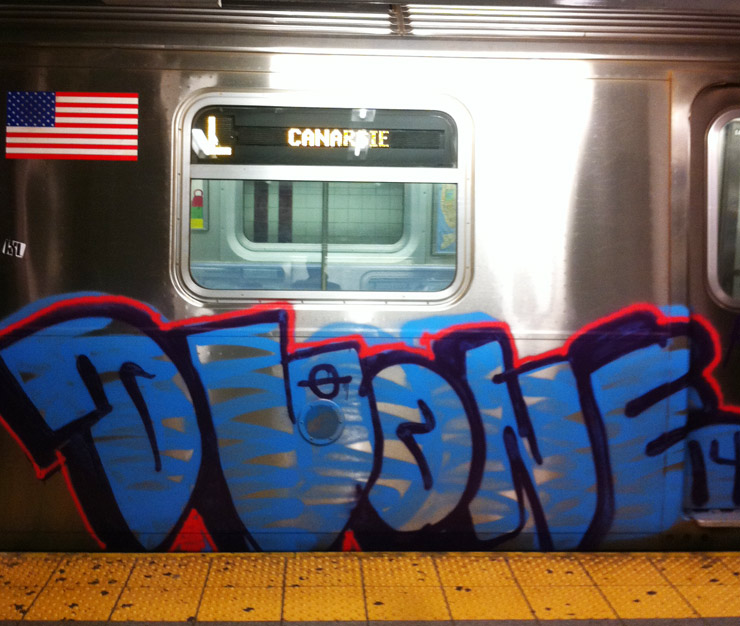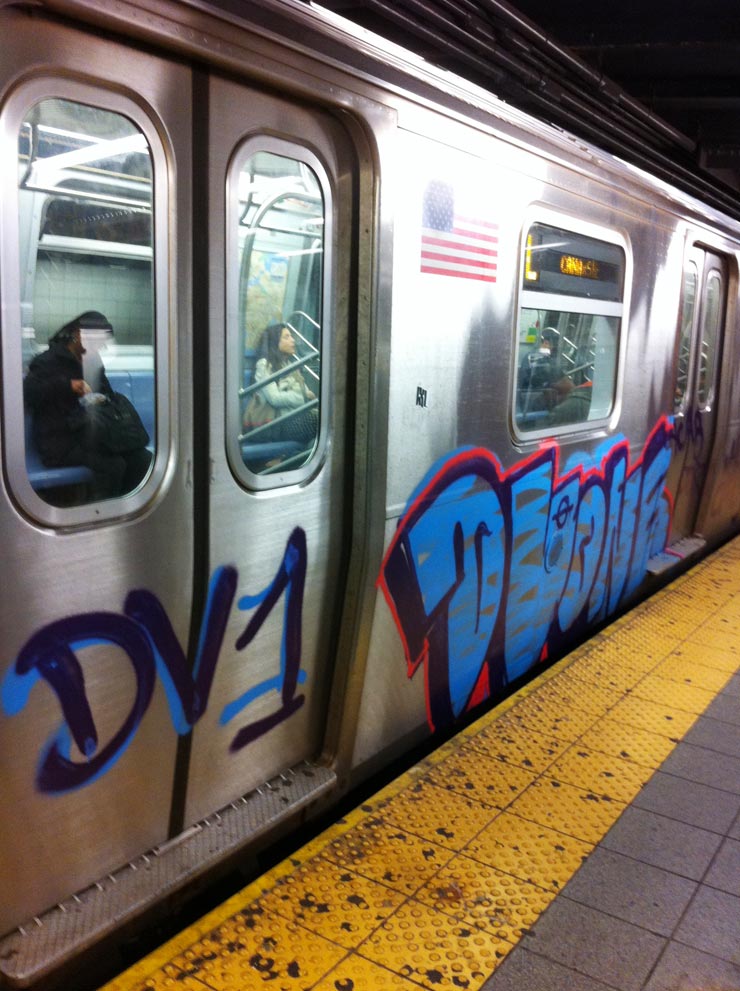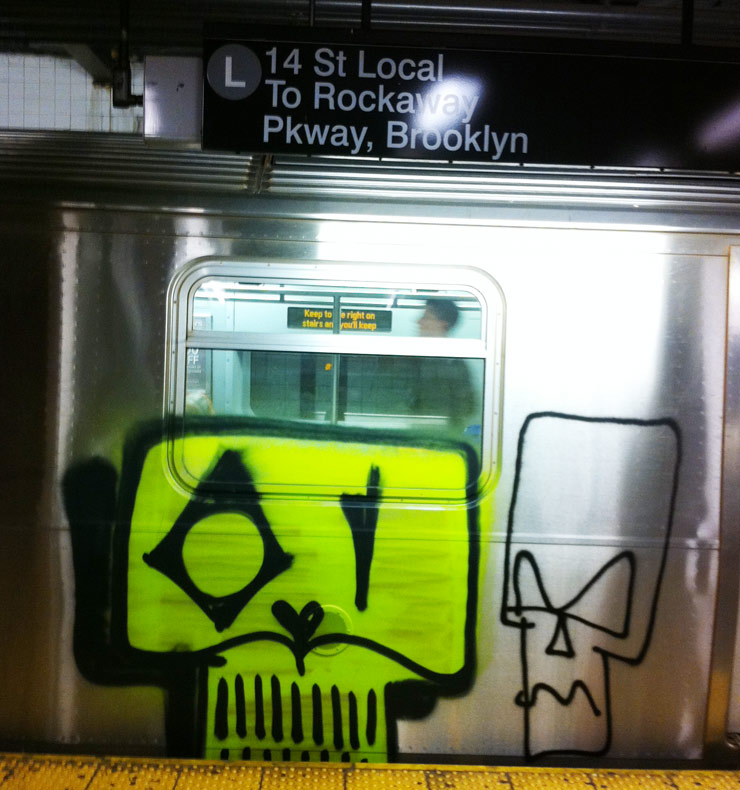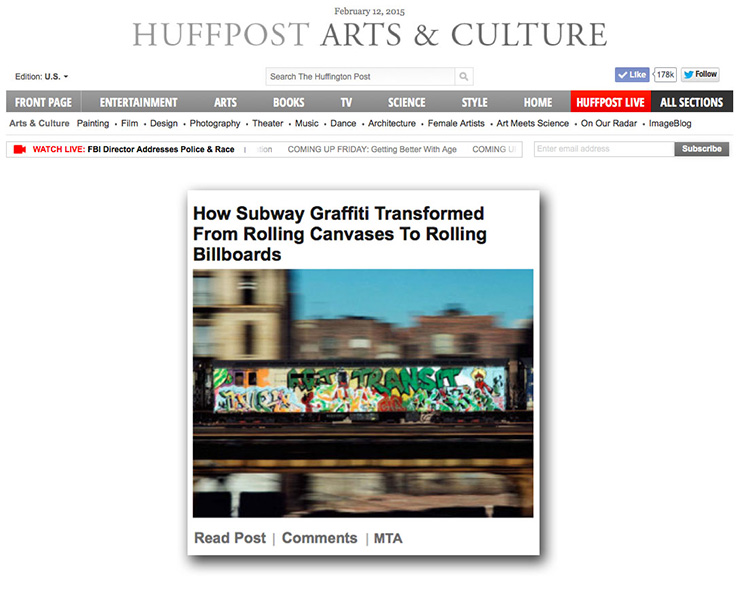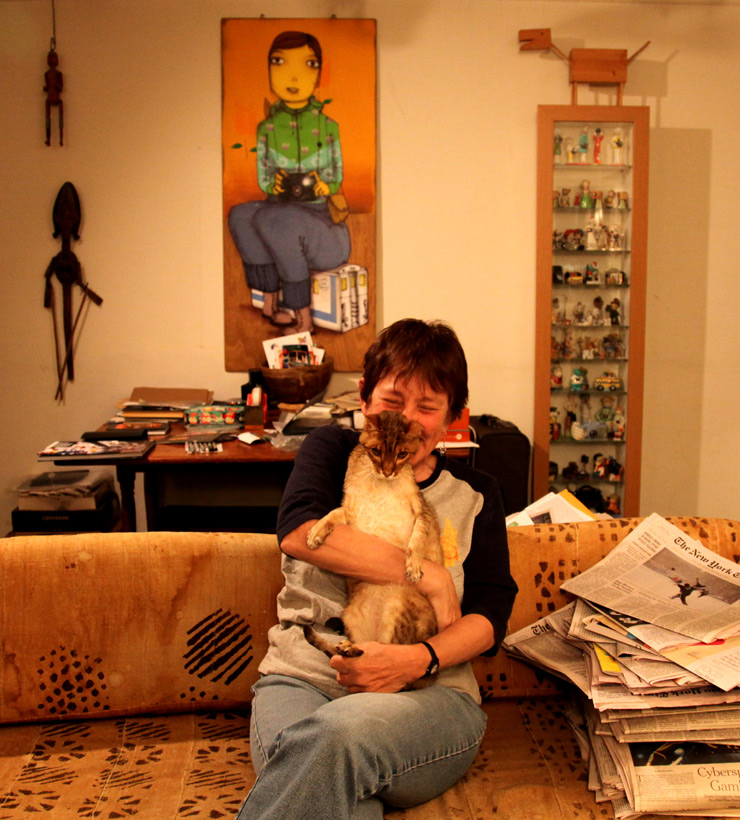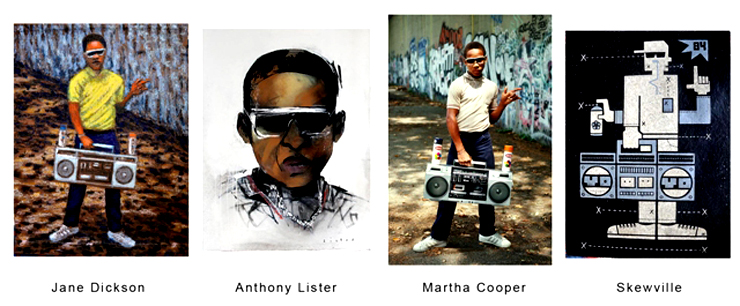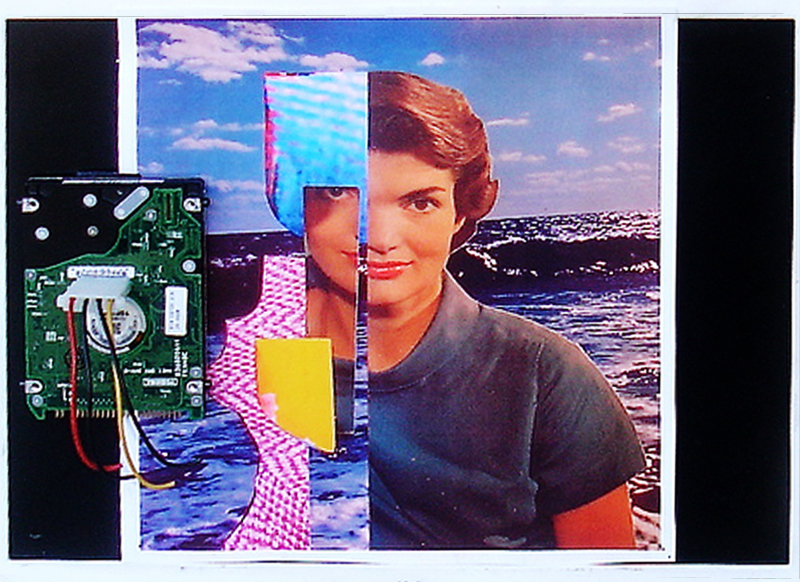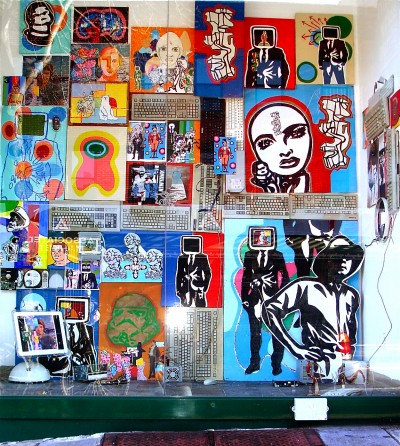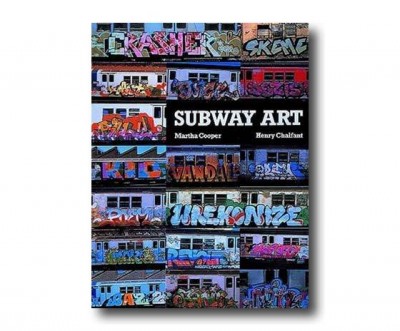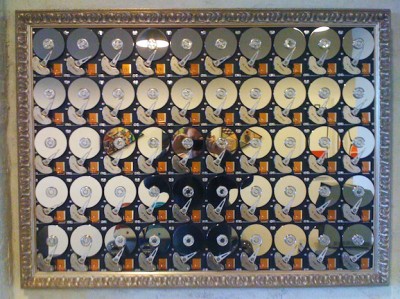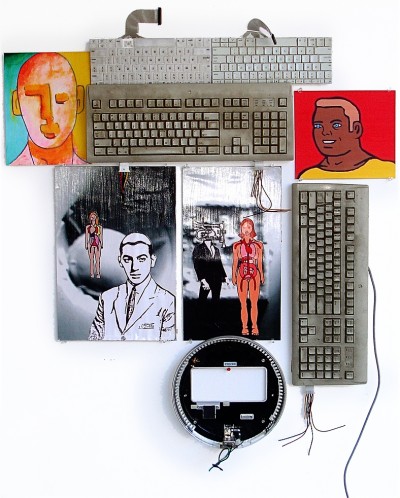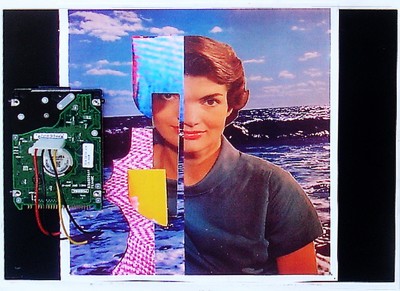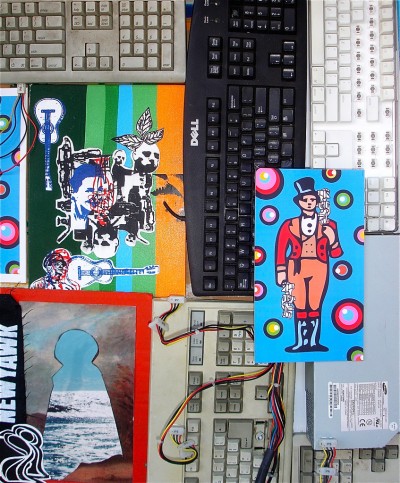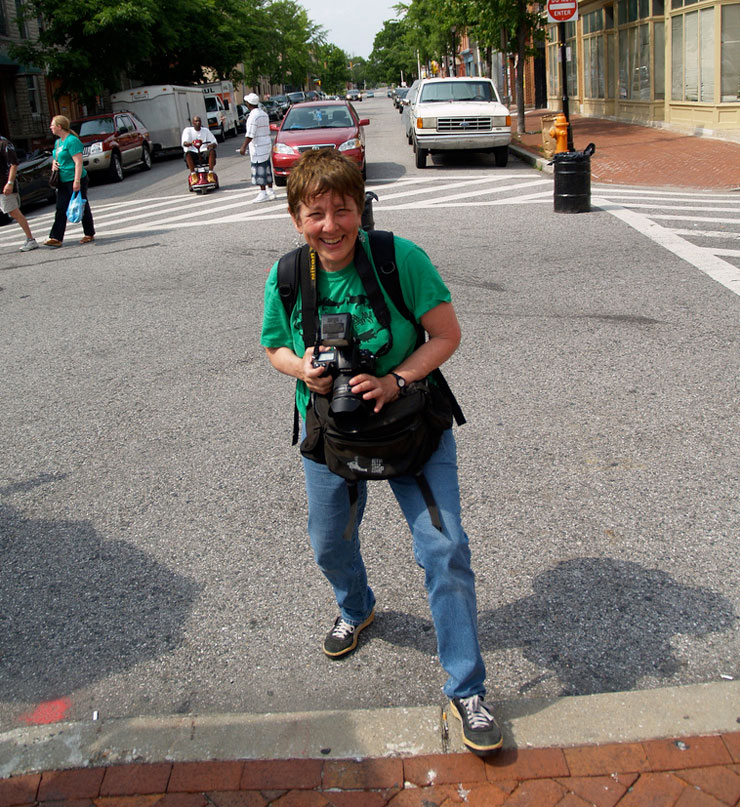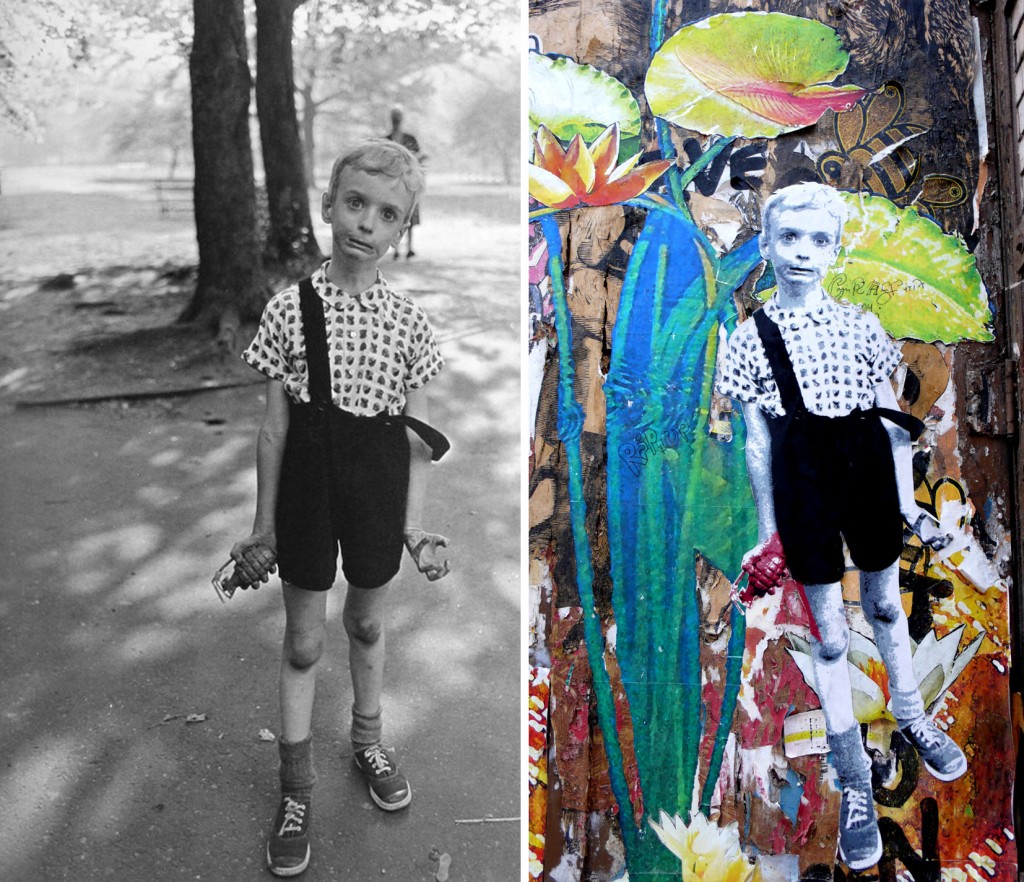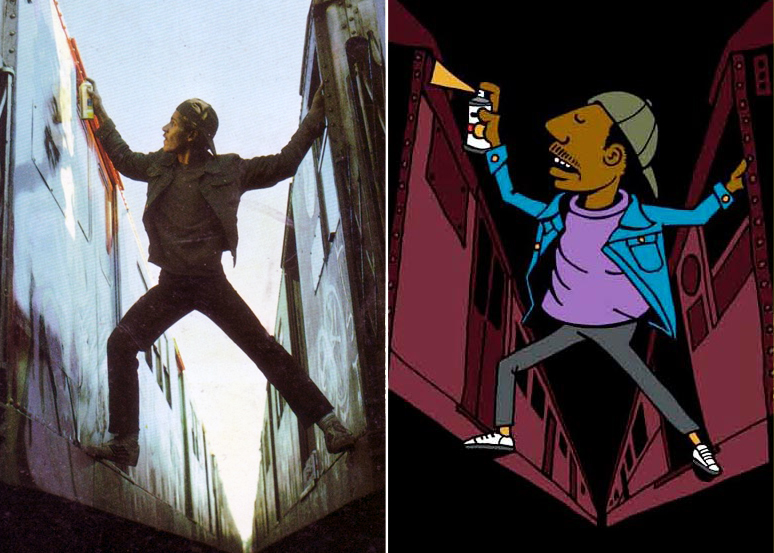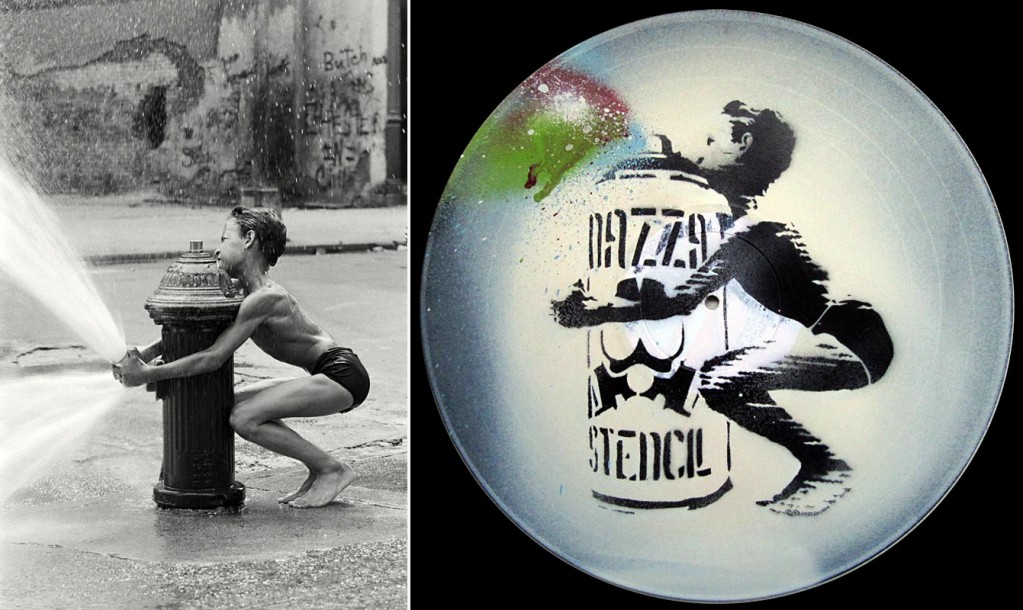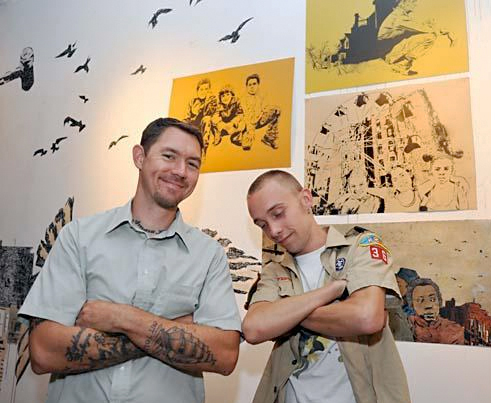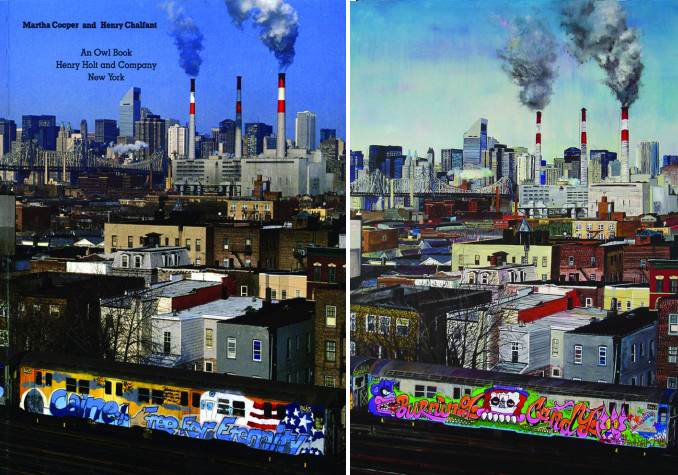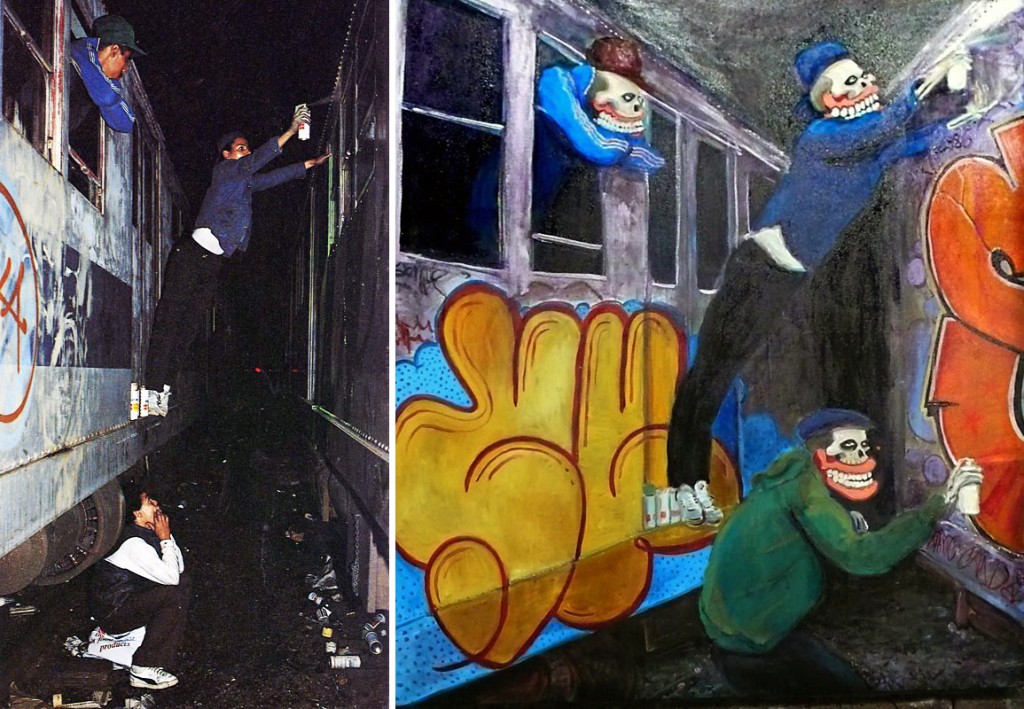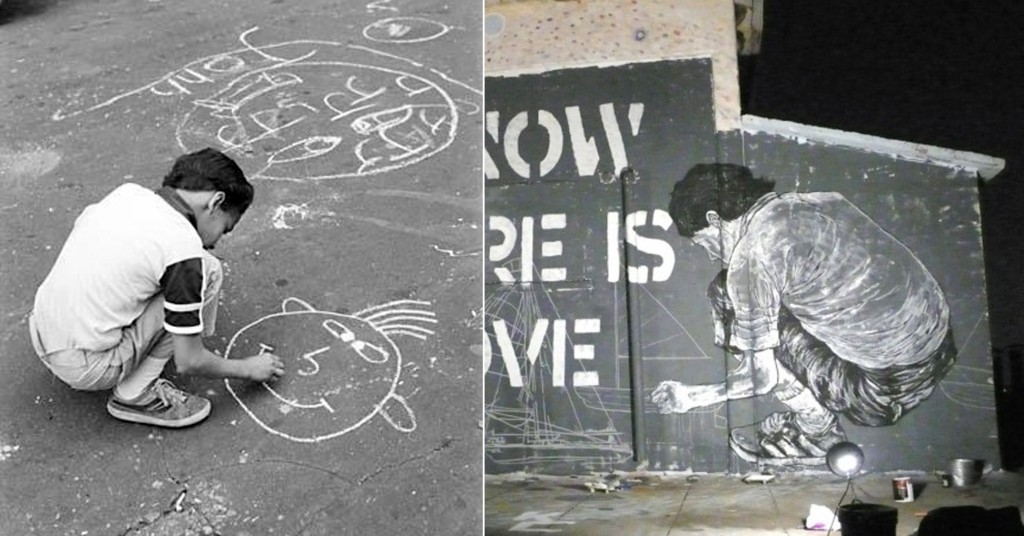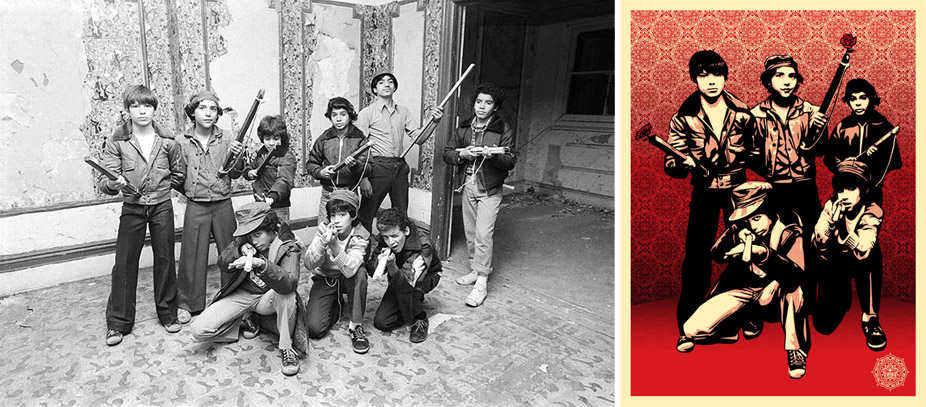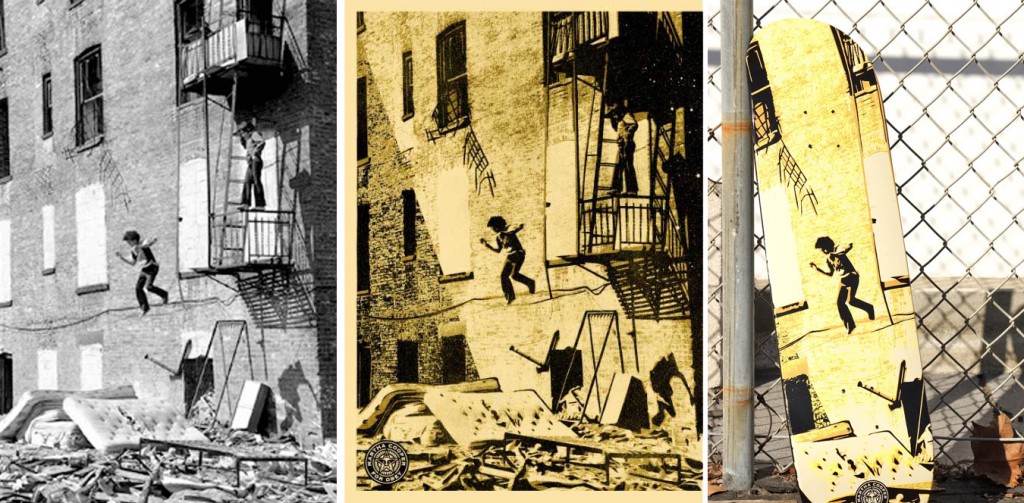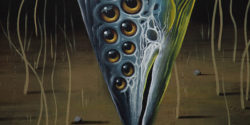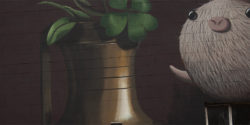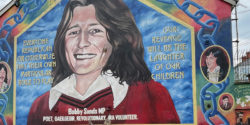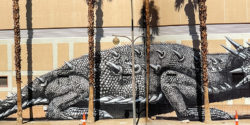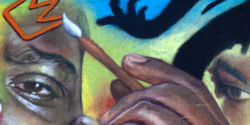James Prigoff signed all of his emails with one word in Spanish: “Paz.” (peace)
It was deliberate, intentional, and with that one word, he created a tag for himself that spoke to his commitment to peace on the street and across the world. Looking over his decades of dedication to exploring and documenting, one sees a sincere commitment to understanding and identifying with other cultures and embracing others as brothers and sisters.
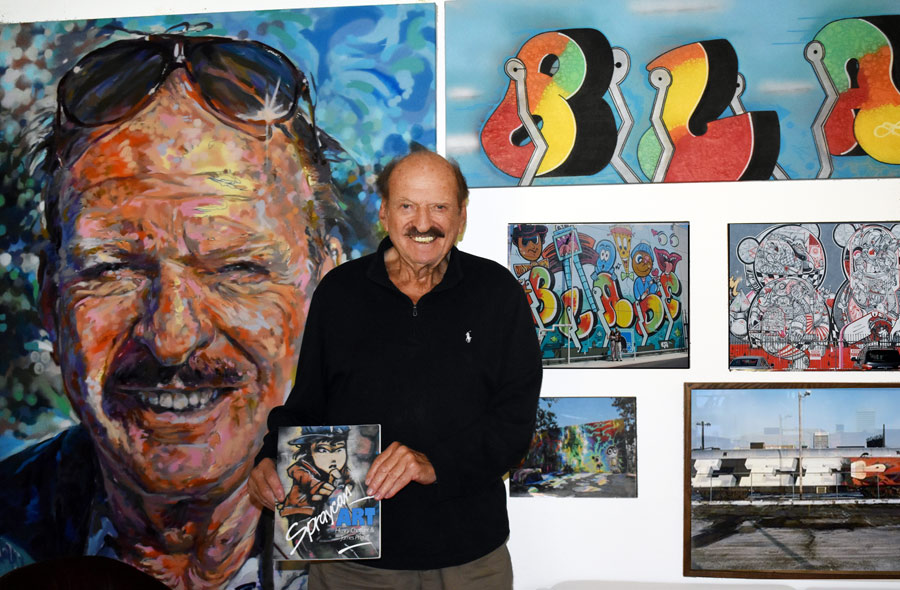
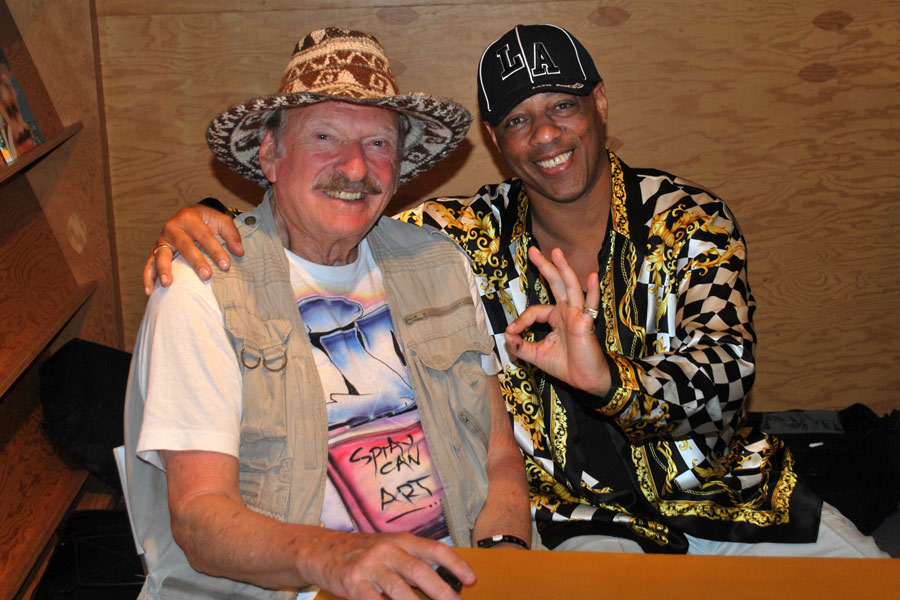
Known foremost in the graffiti world for being the co-author of Spray Can Art with Henry Chalfant in 1987, he captured 100,000 photographs worldwide over five decades. His professional sense of curiosity and self-education drove him to persevere in his documentation of the graffiti scenes of the Western US but eventually spread worldwide.
Today we recognize the personal sacrifice and pride that went into that publication or his subsequent publications and honor the dedication. With his efforts and others like him, the graffiti/street art/mural art cultures received much greater recognition and validation. Serious discussion of the contributions of these practices can be directly attributed to the massive platform his work provided the scene.
Along with Subway Art by Chalfant and Martha Cooper, Spraycan Art is annually sighted as a powerful inspiration to thousands of artists worldwide who needed that encouragement to express themselves as artists. That alone is a reason to celebrate his life and be thankful for his work and deep dedication to the culture.
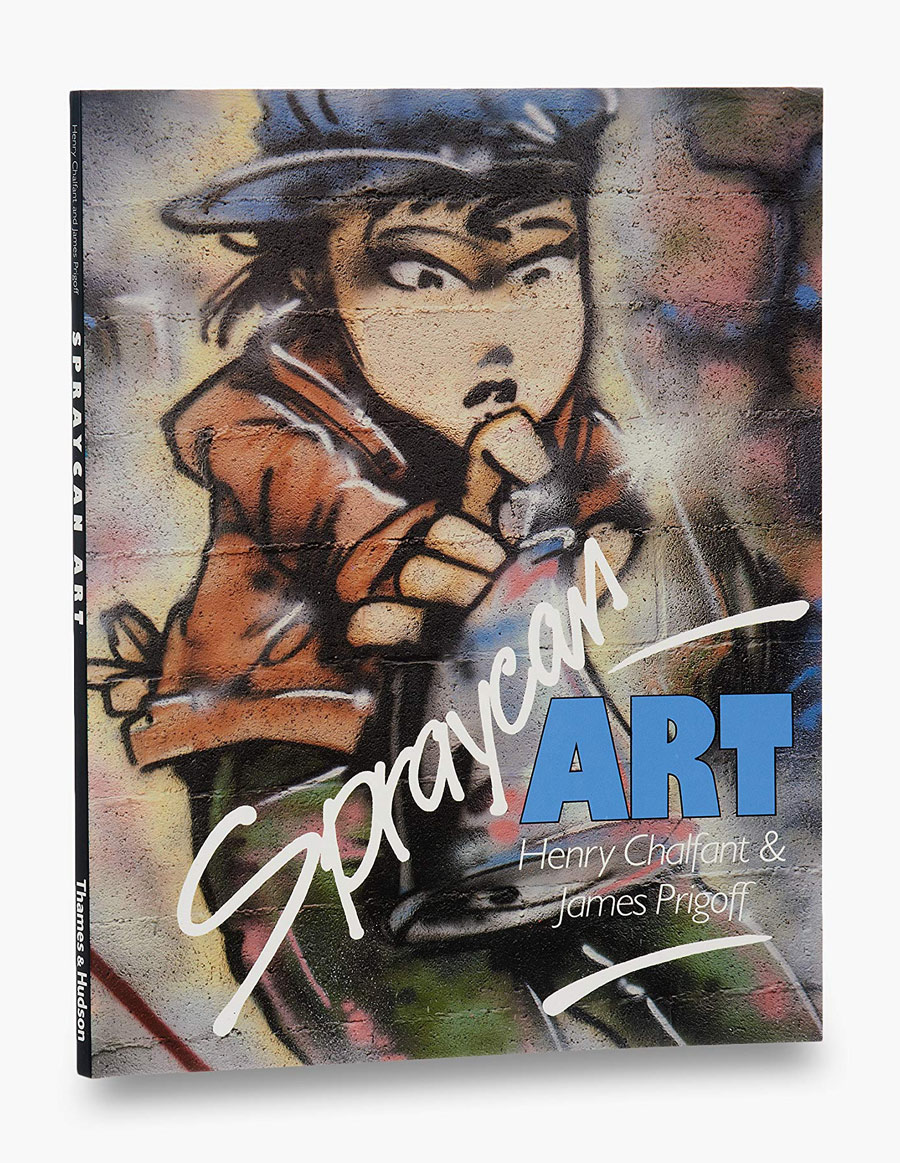
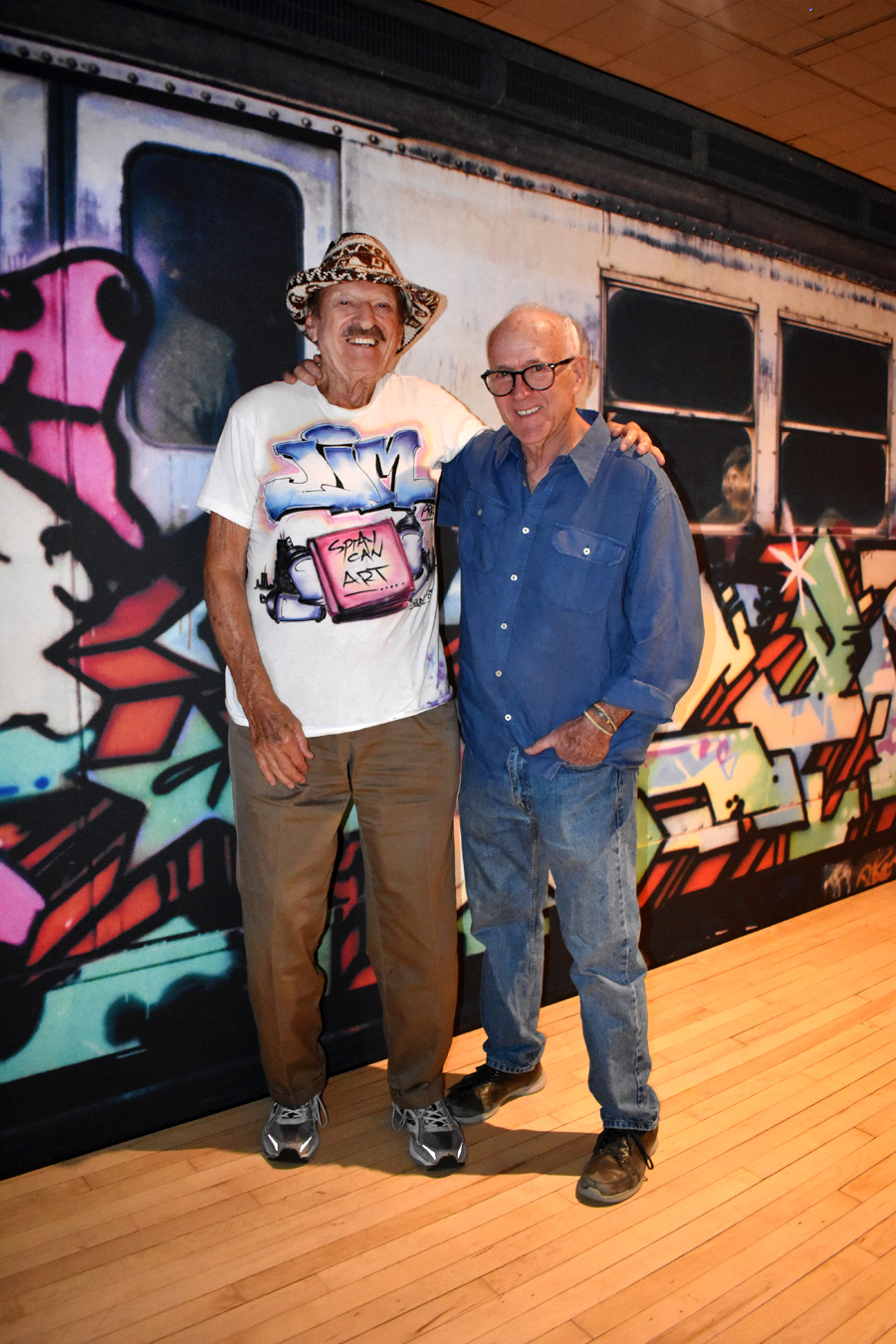
It was in the early 1970s “I became fascinated with the political nature of the art in the streets,” Jim wrote in perhaps his last personally written essay and publication here on BSA Writer’s Desk just last month. The inaugural opinion/editorial of the monthly series provided him the opportunity to talk about his life, formal and street education, his observations of artists and movements in culture and politics during the last 7 of his 9-plus decades. A civil libertarian and champion of the rights for the equality of people across the spectrum, he was happy to make “good trouble” even suing the federal government over an unconstitutional surveillance program in the mid-twenty-teens.
An avid observer and analyst, we prized Jim as a friend and confidante because he knew how to connect the dots between larger socio-political movements and to put the art and artists within context. Astutely diplomatic and wise, he advised us on navigation and perspective in this vast creative world of graffiti, street art, and mural – lessons we will not forget. He also shared his theory about photographers being led by “the Graffiti Gods” with a smile and a glint in his eye.
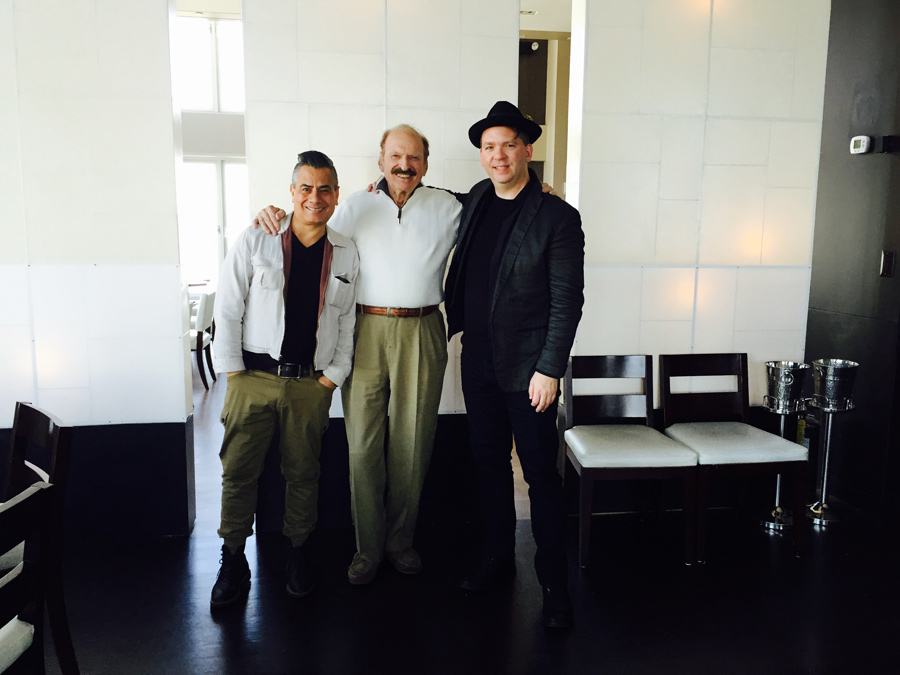
His empathy was never far from any topic, despite his strident views and opinions. Even during this last year of Covid he wrote to check on us;
“Not an easy time to be shut down in NYC. Hope you are doing OK.”
Only two weeks ago Jim wrote to us with his concern that Gen Z was not getting vaccinated at the rate of the rest of the population and he wondered aloud if street artists were helping to reach out to them on the street.
Less able to travel as freely in recent years, he attended big exhibition openings near his home of Sacramento and Miami and New York – usually with one of his gentle and patient children pushing his wheelchair. Each time he was enthusiastic and opinionated and, well, joyful. Last summer, during Black Lives Matter protests across the country, he was thoroughly following events and their effects on art on the street. He was also eager to share what he found with the world.
“In some 50 years of documenting public art, I have never seen such an outpouring of political images as I have personally witnessed in the streets of San Francisco, Oakland and Sacramento, ” he said in this piece we published last June.
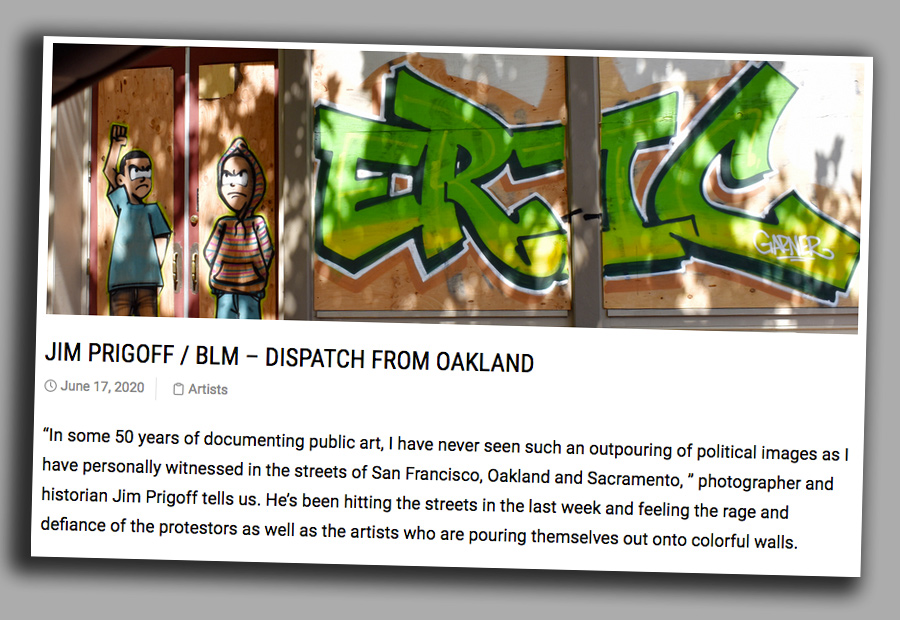
He shot photos from the open window of a car driving through Oakland, eager to share what he found – which we published. Jim often commented on our daily postings to us in emails – and we are proud that he shared his writing and photos on several occasions with BSA readers. Always more interested in people than profit, Jim understood our platform and mission better than many.
Our hearts are sorrowful to bid goodbye to Jim Prigoff now, but we are comforted to believe that he is joining his dear Arline, with whom he spent 72 years as husband and wife. An absolute pillar in graffiti, street art, and mural history, documentation, and archiving – Jim was a scholar, an ardent peace activist, an author, lecturer, community activist, a fervent supporter of so many, and a kind person. Our deep condolences to his children, grandchildren, great-grandchildren, his graffiti/street art family, and his colleagues. We are grateful to have called him a friend.
Jim’s last published essay was on Brooklyn Street Art as the inaugural essay for BSA Writer’s Bench in March, 2021:
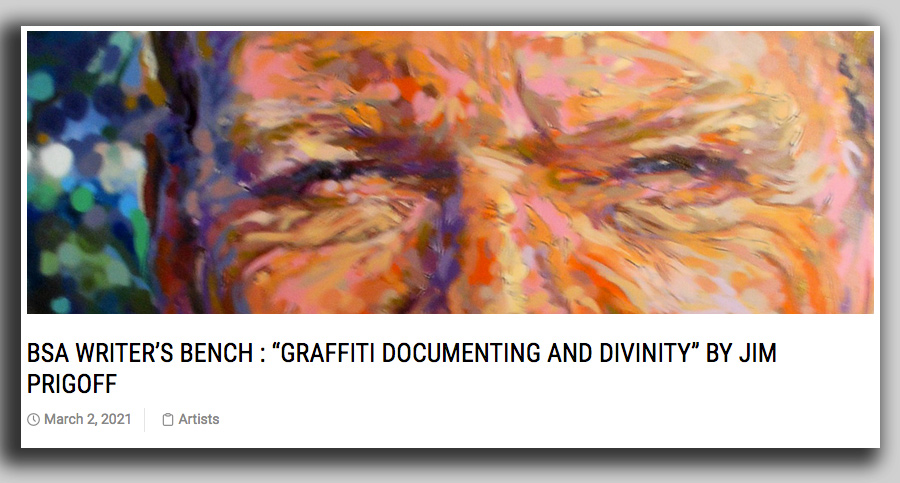
“Graffiti Documenting and Divinity” by Jim Prigoff
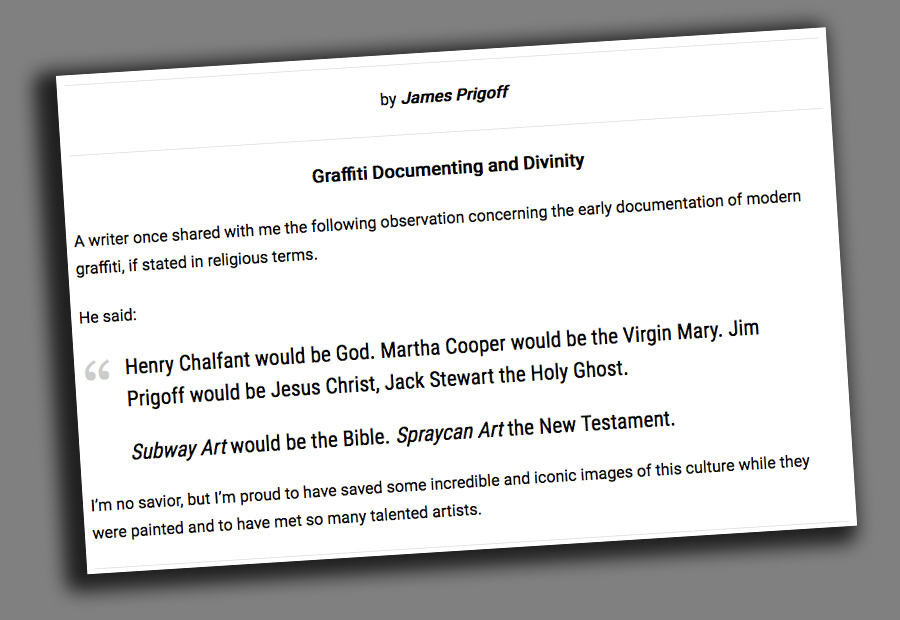
Selected quotes from hundreds of social media commenters across Facebook and Instagram
“Jim’s good work is done, may he rest in peace.” Henry Chalfant
“Jim was so good to us. He allowed us access to hundreds of rare East Bay photos and couldn’t have been any more generous. Jim loved the East Bay and knew most of the writers by name. His only hope was that his photos would be seen and we intend to make that happen. Rest in peace to a great human being and true graffiti devotee. You will be missed. Much love, Will & Jake” from East Bay Archive
“The coverage Henry and Jim gave to Goldie in Spraycan Art provided a massive worldwide boost to his career and encouraged him to think globally.” Martin Jones
“Pictures that meant so much to so many. Those pictures was part of so many people’s phase of growing up and becoming those who they are today. People such like myself. Thank you Jim.” Tatu Moisio
“Spraycan Art was, is and will remain alongside Subway Art as the Bibles for anyone interested in graffiti. I’m from North-East Scotland, and it certainly had a huge influence in my life.
Not to mention being one of the most stolen books OF ALL TIME!
RIP Jim, and thank you.” Eddie Grady
“A worldwide generation were introduced to a new breed of heroes who became a catalyst to our lives, and for those whose work was featured by Henry, Jim and Martha, their lives were forever changed. Take a moment to imagine a world where your work never existed… … that truly provides an awe-inspiring perspective. A life lived with huge contribution. Rest In Peace Jim!” Gordon Barrett
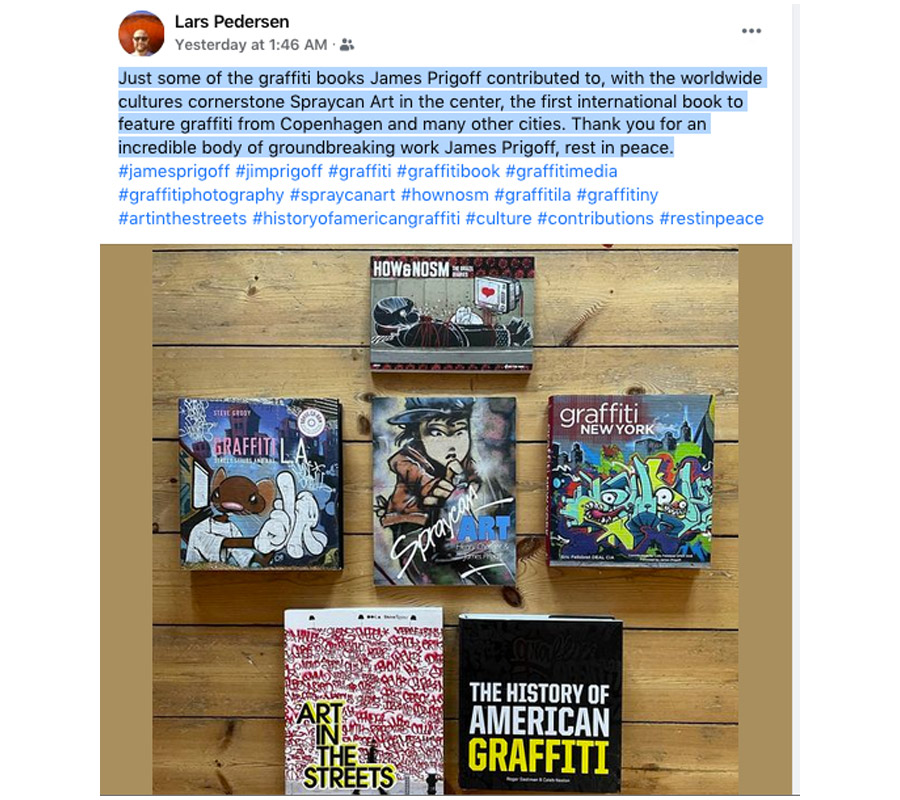
“We went on a 6 hour tour around Chicago together. Fascinating conversation about art and life, thru the years. Very enriching conversation for a youth of 17. A Gentleman and a Scholar truly. Risen In Perfection.” Tyr Dem
“It’s so Strange. I was just going through Spraycan Art this morning.” Lars Skouboe
“I am saddened by the news of the passing of a champion of graffiti culture.” Gonzo 247
“Spraycan Art introduced us to other graffiti legends in across the country and internationally.” Carlos Tiangco
“This guy gave us kids access to a culture that shaped us, our futures and our world. Thanks James / Jim Prigoff. 1927-2021.” Sunk One
The graffiti community lost an advocate and documentarian yesterday. Thanks for all your years of dedication to documenting us all Jim. He was one of a kind. I’m glad to have known him. Rest well.” Alan Ket
“Rest in Peace James Prigoff — Spraycan Art was the first book I ever looked thru as a teen to learn about graffiti. It is where I saw Lady Pink for the very first time!” Toofly
“This was our culture. What we offered the world. The birth of a culture. A culture that became a world wide phenomenon. Last night one of our documentarian passed. RIP James Prigoff. A great guy who shared with the world through his photos this culture we created. Yo James..
“AND WE DONT STOP!” TKid
“My Heart is still breaking from the passing of our friend and historian, author and photographer Jim Prigoff whom I was in constant communication with until 3 days ago.” Portia Gail McHenry-Ogburn
“This book changed the course of my life forever… as well as tens of thousands of youths across the world throughout the 80’s – 90’s. Thank you #JimPrigoff for your passion and dedication. #JimPrigoffForever.” Revok
“Saddened to hear of Jim’s passing, my condolences to his family and friends.” John “Crash” Matos
“Wow. This is sad… he would stay at my dads house and do you Friday night slideshow sessions with popcorn when he would come to town.
Jim will would always remind me how lucky we are and to never throw food away. This has stuck with me to this day.” Carlos Rolon
“So sad to hear about the passing of one of the greatest – graffiti and street art photographer, author and peace activist Jim Prigoff.
I met him in Los Angeles where he took me on a tour to photograph graffiti. We shared a panel in the Museum of Contemporary Art (MOCA). He supported me so much with my books, contributed an amazing photo of female graffiti artist Reminisce to my Graffiti Woman book and even wrote a foreword for my last book Street Messages.
Through him I ate the American version of coleslaw for the very first time.
He was an amazing and inspirational person. He influenced the whole world with his book Spraycan Art (together with Henry Chalfant), that sparked a main flame for the widespread graffiti fire.
Thanks so much for all the time you shared with me, my thoughts are with your family and friends. May you rest peacefully.
Paz.”
Nicolas Ganz
“I have so many photos and emails from Jim from over the years. This man was a force and driver in the culture. If he was a kid when writing started he would have been a writer for sure. It’s nice to read all the stories about the him. This photo of me holding his book is from the beginning of 2020 when he had a showing in San Francisco. I told him i couldn’t believe after all these years i didn’t have a signed copy from him. He hooked it up in classic Jim style. I salute you to a full impactful life and thank you for helping a lot of writers careers one way or another. Rest in power” Apexer
“Yea man heavy hearts right now. That book man was the west coast bible!” Aaron De La Cruz
“Our dearest Jim.
When we last saw you two weeks ago you said the single most amazing technological advancement (in your opinion) was the ability for photographs to be shared via email. You said that you imagined that it was even more impressive to you than the automobile had been to your parents. Despite your awe of the invention of digital photography and email, you took on this miracle as you did all things you were passionate about, with gusto.
How lucky are we that you lived you in the era of the modern day camera. You took an art form that was inherently temporary (graffiti) and made it permanent. You took an art form that was the voice of an entire generation, who could not find a platform to be heard, and shared their voice with the world. You knew that “Art is power” and you never failed to use your privilege in this world to ensure that that power could be amplified for change.
You are a legend, who left the world a better place not only through your photographs but also simply through your presence on this planet.
To us however, you will always be our Grandpa Jim and our very small world will forever be just a bit sadder everyday now that you are no longer an email away.
We love you.” Trisha F.
Jim’s family invites you to write and post photos, videos, and audio on their webpage, your comments, and remembrances. https://www.forevermissed.com/james-prigoff/about
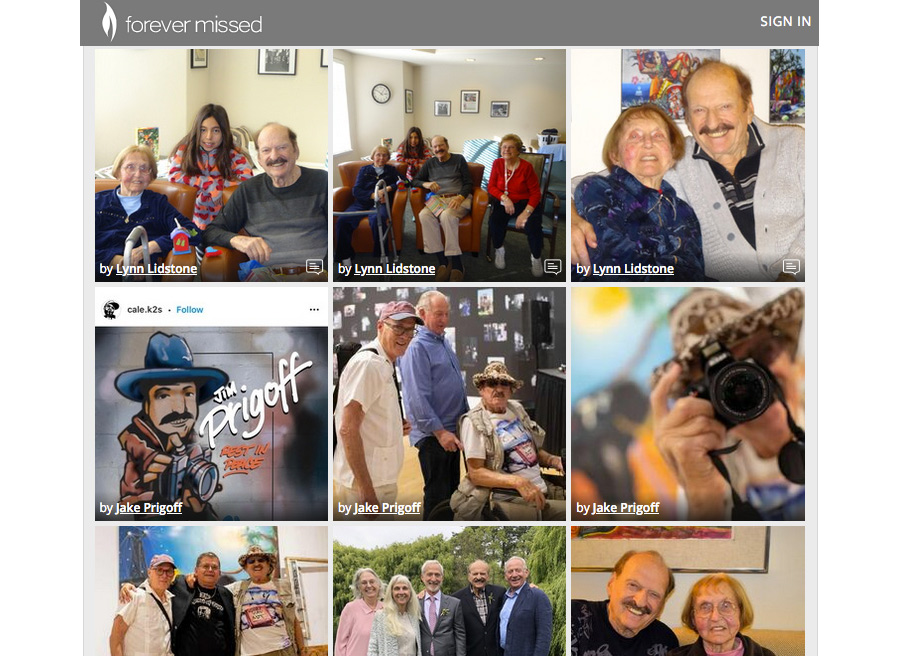
 BROOKLYN STREET ART LOVES YOU MORE EVERY DAY
BROOKLYN STREET ART LOVES YOU MORE EVERY DAY